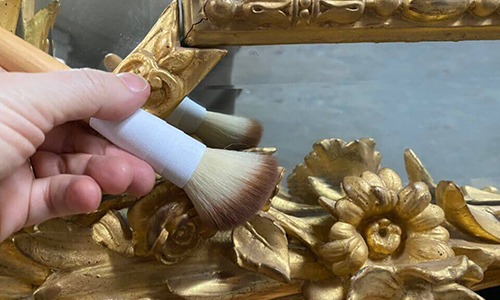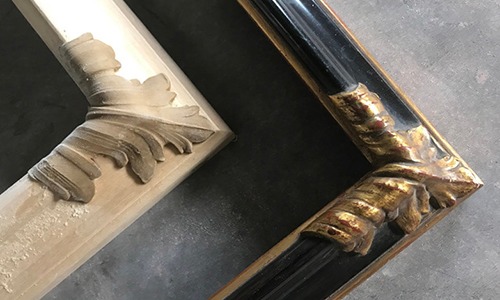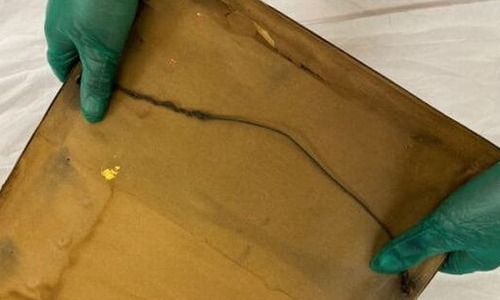Collection Care
Cleaning & Care OF Paintings
By April Hann Lanford
Cleaning and Care of Paintings
By April Hann Lanford
Paintings and gilded frames frequently come to our studio that has sustained damage from improper cleaning. While clients attempt to their artwork with the best of intentions, sometimes cleaning can do more harm than good. All cleaning processes involve contact with the surface of a piece, which causes friction on the surface. This eventually leads to abrasion, which cumulatively can damage the piece.
Oftentimes, it is better to have a light accumulation of dust rather than risk inadvertently damaging the piece that you are trying to care for.
Sage advice-Don’t be afraid to allow for a little accumulation of dust.

Always Check the Condition Prior to Cleaning
Before any attempts at dusting or cleaning, you should first check to make sure that the surface is stable. If you are concerned about the condition of your painting, it is always best to first document the condition. The easiest way is with images. First, take an overall image, and then take details.
Don’t forget about the back as well. Oftentimes, the back of a canvas can provide crucial insight into the condition of the front.
Undulations in the canvas, craquelure, tears, and flaking paint, areas of paint loss, are all indicative of underlying complexities that should be further assessed by a conservator to determine the best approach for proper care.
If you find any detached stretcher keys, detached flakes of paint, or other detached elements, always keep those in a bag with the piece so that they can be incorporated in with repairs or conservation in the future.
Cleaning Paintings is Not a One Size Fits All Approach
Unless you are a trained conservator, never attempt to use any liquids or chemicals on a painted surface. Paintings have complex surfaces that involve multiple layers of varnish, pigmented glazes, varying impasto, etc. Add that to how the artwork has aged over time, or varying environmental exposures, damage, or previous repairs, illustrates that each painting surface is unique.
I frequently am asked about using traditional cleaning methods such as bread or sliced potatoes are appropriate to use for cleaning paintings. Although these seem like innocuous, readily available materials, they can potentially leave a residue on the surface, stain, or even abrade the paint layer.
Unique items and surfaces require individual care, which means, that there is not a single tried and true single approach.
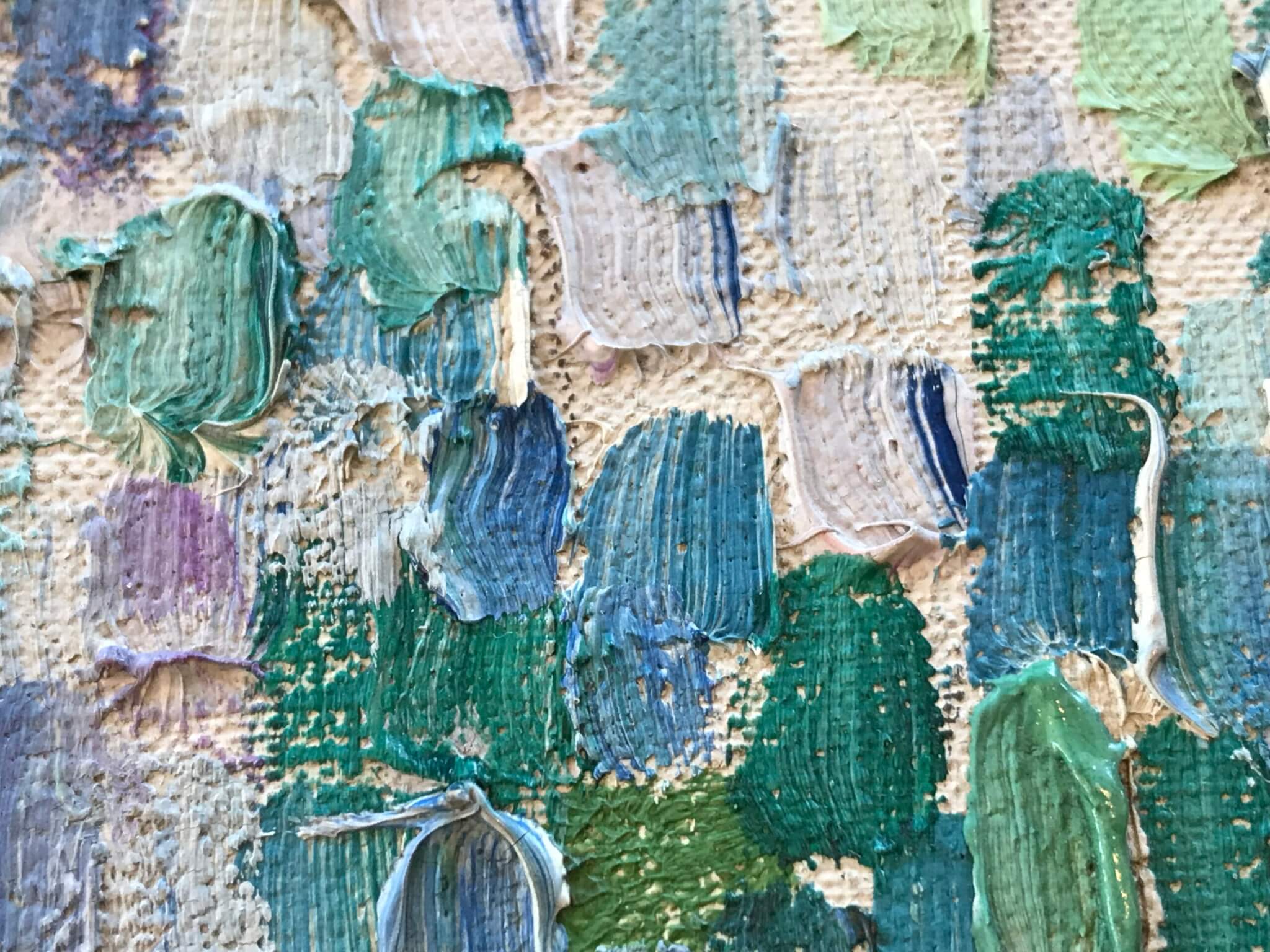
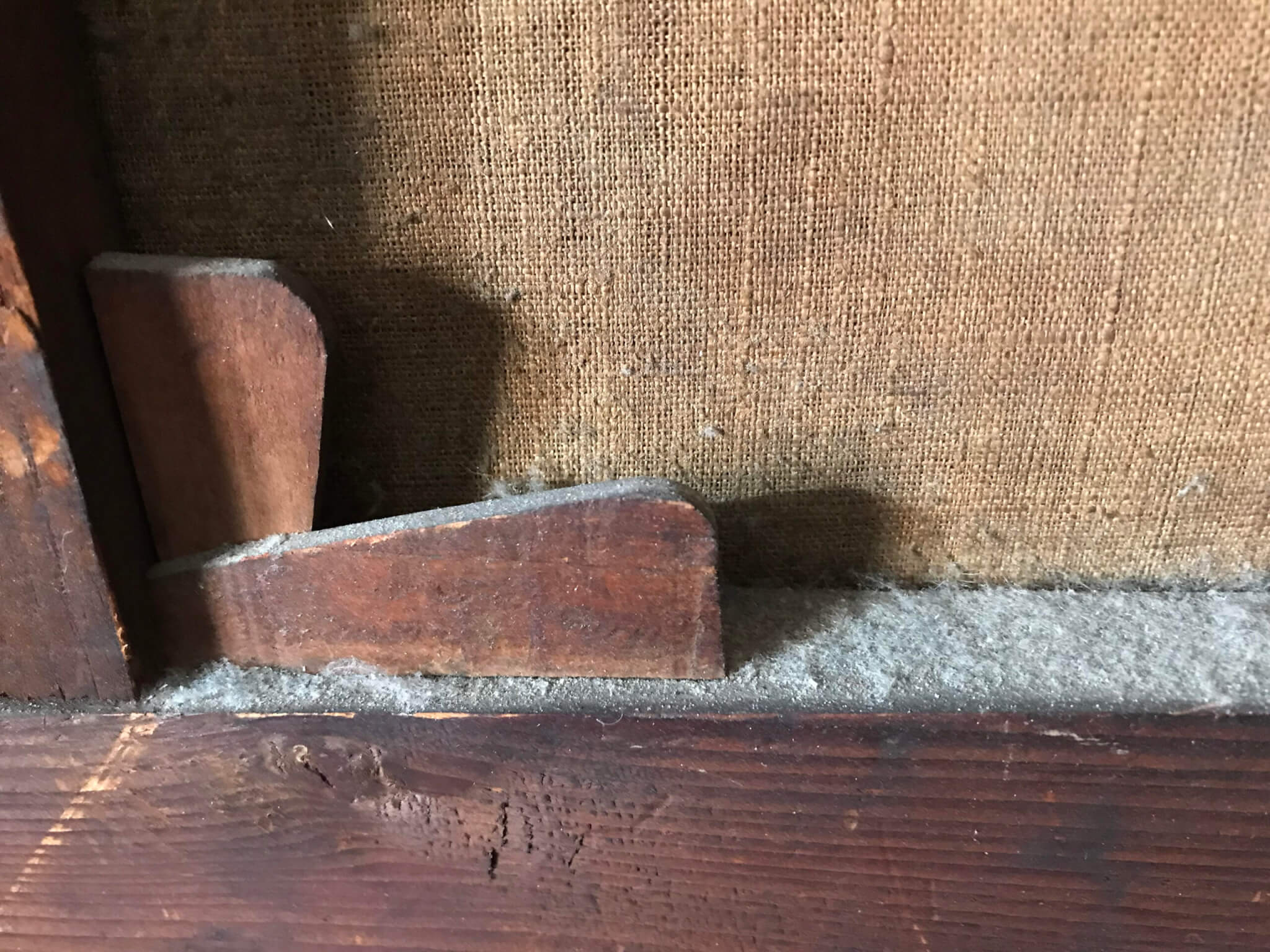
Light Dusting-Less is Best
For care at home, paintings should only be lightly dusted with a very soft-haired brush. A large natural hair watercolor mop brush or cosmetic brush is preferable. When using these brushes, be sure to cover the metal ferrule to protect the painting from accidental contact with the metal. Dusting should be undertaken with very little pressure or contact with the painting surface.
Dusting should never be undertaken if there are cracks or flaking evident on the painted surface. Dusting may further weaken the bond of the paint layer and cause further loss to the surface.
Never Use Feather Dusters
Feather dusters should not be used as the ends of the spines can scratch the surface. I frequently find the small tips of feathers that have broken off from dusters caught in the crevices of cracks in surfaces in works.
Don’t Overlook the Back
The back of the canvas is frequently overlooked. You never know what you might find on the back! In addition to provenance labels, artist signatures, evidence of old repair, I have found old hanging hardware, nails, stretcher keys, and even a pencil caught between the bottom stretcher bar and the back of the canvas!
The textured back of the canvas support is the prime place for the accumulation of dust. The horizontal surfaces of the stretcher bars on the back also tend to gather dust. Cleaning the back of the canvas may take more time than the front of the painting. You can continue to use the same brush that was used for the front of the painting. When cleaning the back, be sure to place the canvas at a slight angle (rather than vertical or upright) so that the dust falls to the tabletop, and not further down where it could be caught between the bottom stretcher bar and the canvas.
When dusting, avoid applying pressure to the canvas as that could lead to insecurity or damage to the paint layer on the front.
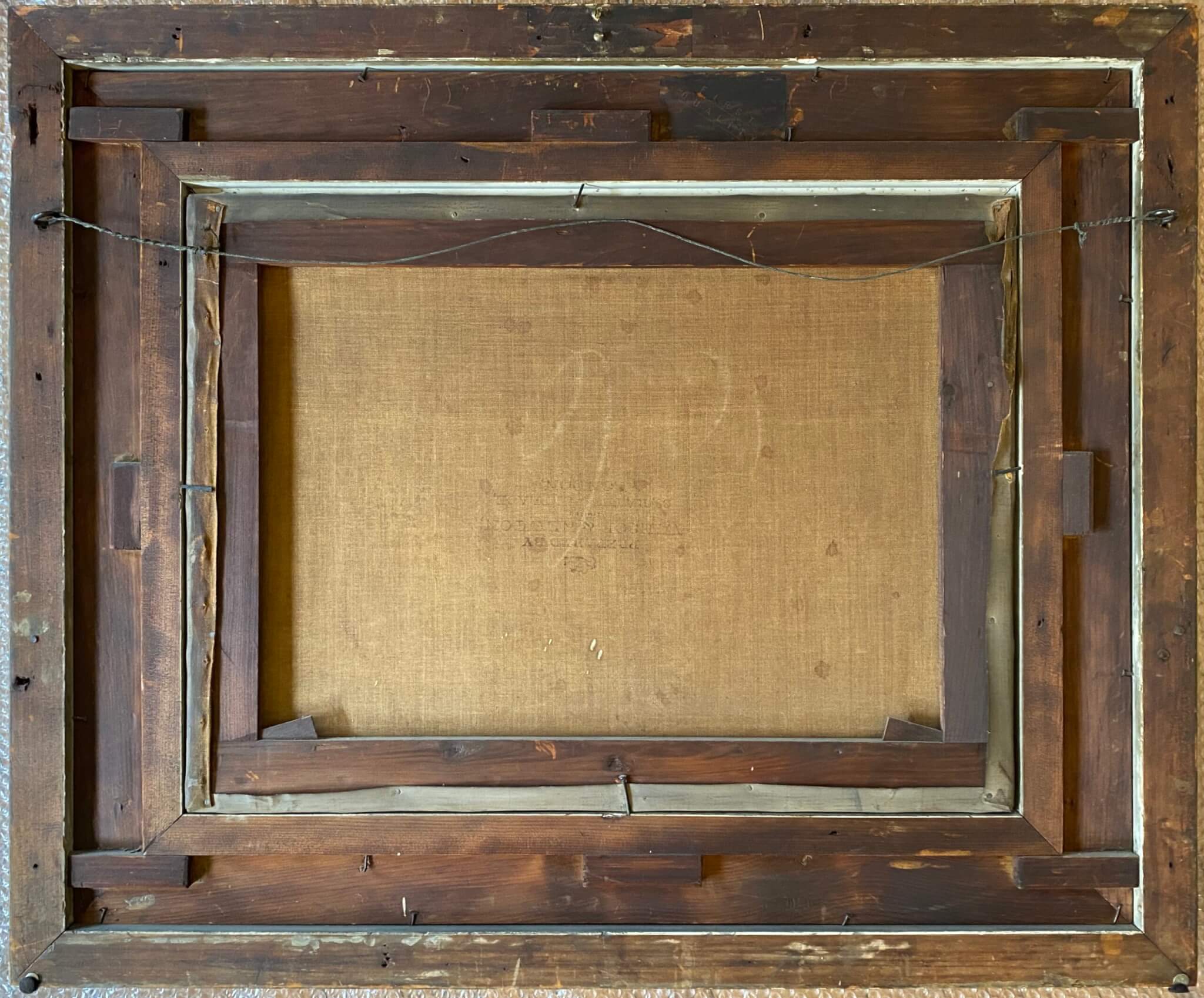
When paintings are cleaned by a conservator, a protective backing board is secured to the back to provide protection from handling and to protect from the accumulation of dust and debris on the back.
If you find old patches that are failing, tears, items stuck between the canvas and the bottom stretcher bar, you should contact a painting conservator to address these issues.
When cleaning paintings, it is important to always remember that “less is more”. A subtle buildup of household dust does not necessarily warrant a full cleaning. However, other exposures, such as construction dust, smoke, or mildew should not be taken lightly. Discolored varnishes, heavy grime, undulations in the canvas, tears, and flaking paint are all also indicative of underlying complexities.
Before attempting to address a concern yourself, you should contact a specialist in the field or conservator. Working with a specialist can confirm the optimal approach to maintain the painting’s integrity and avoid the risk of further damage.
If you have any questions about the care of your piece, please contact us at:
312-344-0331
April@artifactservices.com
Our collection of educational articles about
custom framing, collection care, and emergency response are updated regularly.
Click on each topic below for a menu of corresponding articles.
Collection Care Articles
By April Hann Lanford
Our collection of educational articles provides an introduction to many topics about the preservation and conservation of fine art, antiques, and fine furniture.
Topics are often written as a result of questions provided by our clients.
Emergency Care Articles
By April Hann Lanford
Our emergency care articles are a helpful introduction to how to prevent damage through preventative measures or art and antique collections. When a disaster strikes, prompt response and taking the right steps can mitigate further damage.
Antique Trader Articles
By April Hann Lanford
Visit our collection of articles that have been published in Antique Trader.
antiquetrader
For more than 60 years Antique Trader has been inspiring, informing, and entertaining the collecting community with timely...
Projects
By April Hann Lanford
A selection of Artifact’s most recent projects highlighting our conservation and preservation work. We present each unique story describing the conservation process from reviewing the history, cause of loss, and condition to the steps of the treatment.
Glossary
A collection of art and conservation terms along with makers and firms compiled into a glossary and highlighted throughout our website for reference.
We are available to assist you
Main Location
840 N. Milwaukee Ave, Chicago IL 60642
Mon-Fri: 9:00 am - 5:30 pm
Sat: 10:00 am-4:00 pm
Sun: Closed
Complimentary parking is available in the loading zone in front of the building
We can also serve you by appointment at our other locations in the Chicagoland area.
Additional Locations
Schiller Park • Highland Park • Lake Forest • Lincoln Park • Nashville, TN
Copyright 2024, Artifact Services, LLC | An Artmill Group Company
